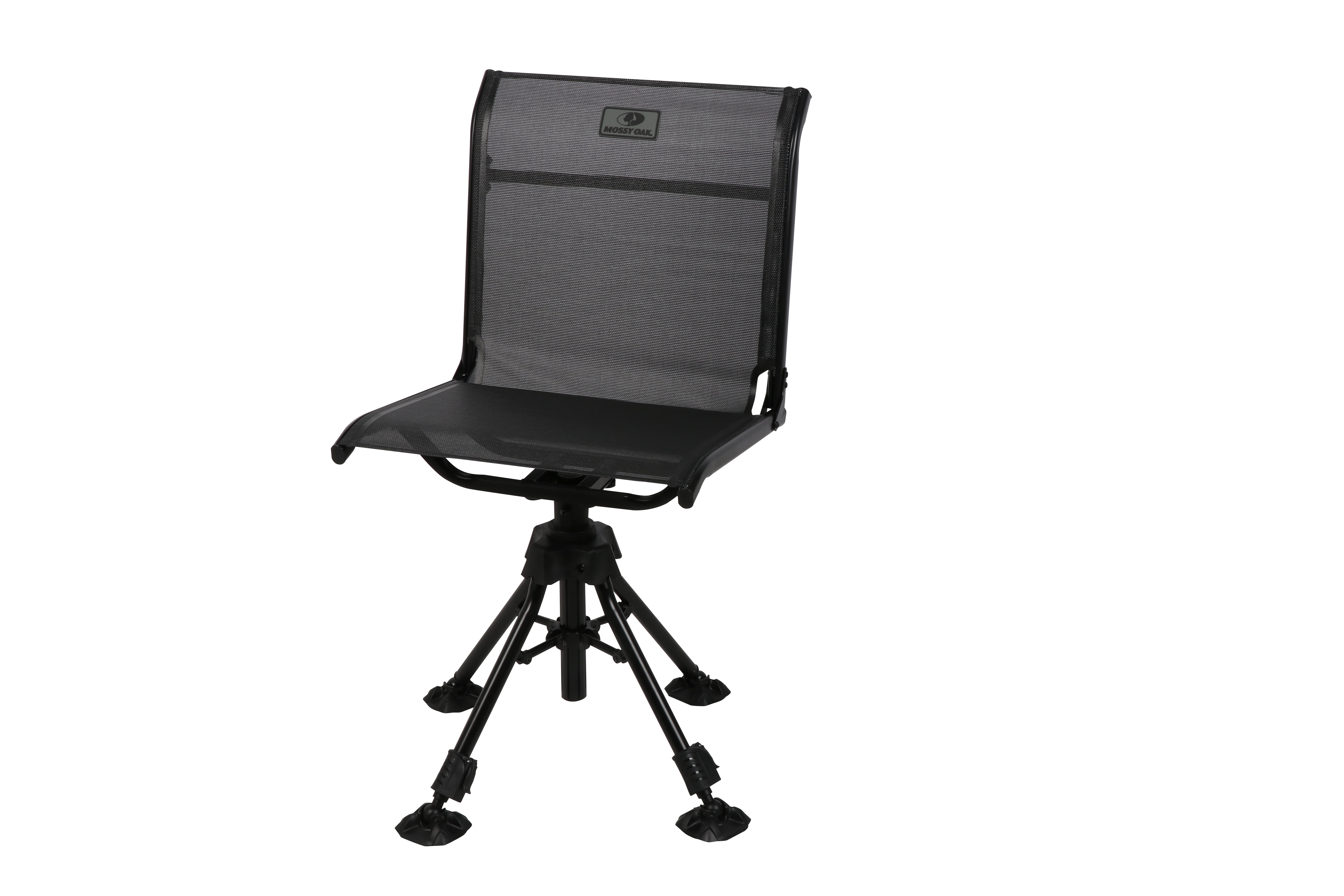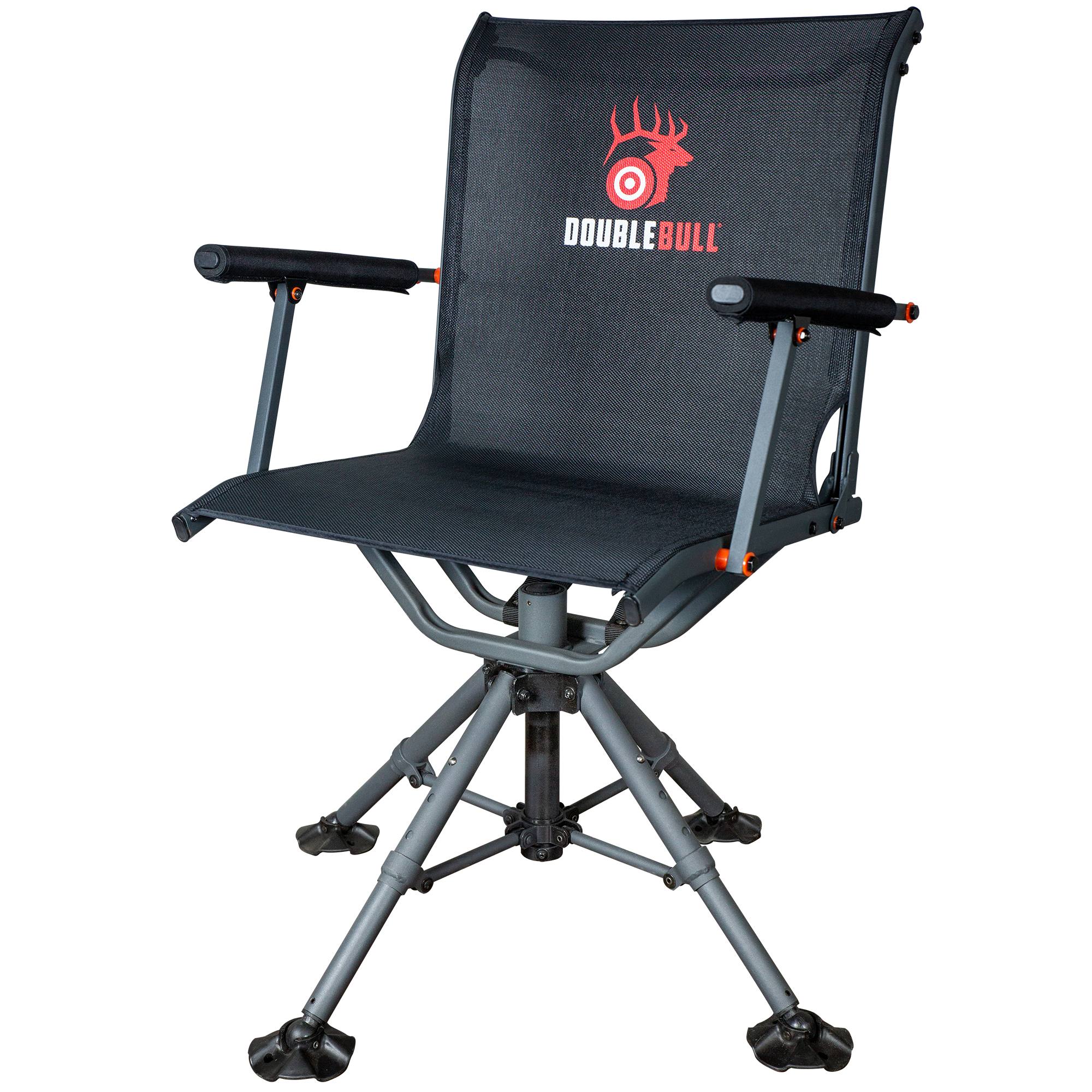Top Features of Best-Selling Ground Blind Swivel Chairs

Choosing the right ground blind swivel chair can significantly enhance your hunting experience, providing comfort and maneuverability for hours of observation. Several key features consistently appear in top-rated models, setting them apart from the competition. Understanding these features will help you make an informed decision when selecting a chair for your needs.
Swivel Mechanisms: Ball Bearing vs. Friction
The swivel mechanism is a crucial component, dictating the smoothness and ease of rotation. Two common types are ball bearing and friction swivels. Ball bearing swivels utilize small, precisely engineered balls to reduce friction, resulting in incredibly smooth, almost effortless rotation. This is particularly beneficial when making quick, subtle movements to track game. Friction swivels, on the other hand, rely on friction between rotating surfaces. While generally less expensive, they can be less smooth and may require more effort to turn, potentially hindering your ability to react swiftly. The choice depends on your priorities; if silent, smooth movement is paramount, a ball bearing swivel is the better option. If budget is a primary concern and you prioritize durability over exceptionally smooth rotation, a friction swivel might suffice.
Seat Comfort and Back Support
Comfort is paramount for extended periods spent in a ground blind. A poorly designed chair can lead to discomfort and fatigue, hindering your hunting effectiveness. Key aspects to consider include padding, adjustability, and back support. Adequate padding, typically made of foam, cushions pressure points and provides a more comfortable sitting experience. Adjustability features, such as height adjustment or adjustable armrests, allow you to personalize the chair to your body type and preferences. Finally, proper back support is essential for maintaining good posture and preventing back pain. A contoured backrest can provide significant comfort and support, reducing fatigue during long sits.
| Model | Padding | Adjustability | Back Support |
|---|---|---|---|
| Model A (Example) | Thick, high-density foam | Height adjustable | Contoured backrest with lumbar support |
| Model B (Example) | Moderate foam padding | None | Standard backrest |
| Model C (Example) | Thin padding | Armrest adjustment | Minimal back support |
Materials and Durability
The materials used in construction significantly impact a chair’s durability and weather resistance. Popular choices include durable fabrics like ripstop nylon or canvas for the seat and back, offering good tear resistance and water repellency. Metal frames, often steel or aluminum, provide structural integrity and stability. Aluminum frames tend to be lighter, while steel frames offer greater strength. The choice of materials should align with your expected use and environmental conditions. A chair intended for harsh weather conditions should prioritize weather-resistant materials, while a chair for use in milder climates might allow for some compromise on weather resistance in favor of lighter weight or lower cost.
User Reviews and Comparisons of Popular Models

Choosing the right ground blind swivel chair can significantly impact your hunting experience. Understanding user feedback on various models helps determine which chair best suits individual needs and preferences. This section analyzes reviews of three leading brands, highlighting key factors influencing user satisfaction and comparing price points to determine value.
Positive and Negative User Experiences Across Leading Brands
User reviews consistently reveal a spectrum of experiences with ground blind swivel chairs. While many praise comfort and ease of use, others cite concerns about durability and stability. For example, one prominent brand, let’s call it “Brand A,” receives high praise for its comfortable padded seats and smooth swivel action, but some users report issues with the chair’s frame breaking down after extended use in harsh conditions. Another brand, “Brand B,” is often lauded for its lightweight and portable design, perfect for hunters frequently moving between locations. However, some reviews mention a lack of robust support, making the chair feel less stable than others. Finally, “Brand C,” known for its sturdy construction and superior stability, sometimes receives criticism for being heavier and less portable than competitors. These varied experiences highlight the importance of considering individual hunting styles and priorities when selecting a chair.
Key Factors Influencing User Satisfaction, Best ground blind swivel chair
Several key factors consistently emerge in user reviews as significant influences on overall satisfaction. Ease of use, particularly the simplicity of setup and adjustment, is frequently mentioned. Hunters appreciate chairs that are quick and easy to assemble and adjust on the fly. Stability is another critical factor, with users prioritizing chairs that provide a secure and steady platform even on uneven terrain. Portability, especially for hunters who frequently move between hunting spots, is also highly valued. Lightweight and easily transportable chairs receive high marks in this area. Finally, comfort, including seat padding, back support, and overall ergonomics, plays a significant role in user satisfaction. Hunters spending long hours in their blinds prioritize chairs offering maximum comfort to minimize fatigue.
Price Point Comparisons and Value for Money
The price range of ground blind swivel chairs varies considerably, influencing purchasing decisions. To illustrate, let’s consider three price brackets: budget-friendly (under $100), mid-range ($100-$200), and premium (over $200).
- Budget-Friendly (Under $100):
- Pros: Affordable, good entry point for occasional hunters.
- Cons: Often less durable, may lack advanced features, potentially less comfortable.
- Mid-Range ($100-$200):
- Pros: Better balance of features, durability, and comfort. More likely to include features like padded seats and improved swivel mechanisms.
- Cons: May still lack some of the higher-end features found in premium models.
- Premium (Over $200):
- Pros: Typically offer superior durability, comfort, and advanced features (e.g., extra padding, enhanced stability, more robust frames).
- Cons: Significantly higher price point, may be overkill for casual hunters.
User Reviews Categorized by Hunting Style
User reviews can be categorized to reveal how chair features suit different hunting styles. For example, waterfowl hunters often prioritize lightweight and easily packable chairs due to frequent movements between blinds. Deer hunters, on the other hand, might place a higher emphasis on comfort and stability, as they may spend extended periods in a single location. Similarly, turkey hunters may value quiet operation and a low profile design, whereas bow hunters might prefer chairs that allow for a more natural shooting posture. This illustrates how the ideal chair varies based on specific hunting needs and preferences.
Guide to Choosing the Right Ground Blind Swivel Chair: Best Ground Blind Swivel Chair

Selecting the perfect ground blind swivel chair involves careful consideration of several key factors. Your choice should depend on your hunting style, the terrain you typically hunt in, and your personal comfort preferences. This guide will help you navigate the selection process and find the ideal chair for your needs.
Factors to Consider When Selecting a Ground Blind Swivel Chair
Choosing the right ground blind swivel chair requires a balanced assessment of several important features. Comfort, durability, weight, and ease of use are all crucial considerations. Ignoring any one of these aspects can significantly impact your hunting experience. The following points provide a structured approach to decision-making.
- Comfort: Consider the seat padding, backrest height and support, and overall ergonomics. A comfortable chair will significantly enhance your hunting experience, particularly during long sits. Look for chairs with adjustable features to accommodate your body type.
- Durability: The chair should be made from high-quality, weather-resistant materials that can withstand the rigors of outdoor use. Check the construction and materials to ensure longevity. Look for reinforced stitching and sturdy frames.
- Weight and Portability: Consider the chair’s weight and how easily it can be transported to your hunting location. A lightweight chair is easier to carry, especially over long distances. Features like carrying straps or handles are valuable assets.
- Swivel Mechanism: A smooth, quiet swivel mechanism is crucial for stealthy observation. Test the swivel action before purchasing to ensure it’s fluid and reliable. A jerky or noisy swivel can compromise your hunting success.
- Price and Value: Balance your budget with the features and quality offered. A higher price doesn’t always guarantee superior quality, but a well-made chair will usually offer better durability and comfort in the long run.
Decision-Making Flowchart for Ground Blind Swivel Chair Selection
A structured approach to selection will help ensure you choose a chair that meets your specific requirements. The following flowchart Artikels a step-by-step process:
- Determine your budget: Establish a price range for your purchase.
- Prioritize key features: Identify your top three priorities (e.g., comfort, durability, weight).
- Research models: Explore different brands and models that meet your priorities.
- Read reviews: Consult online reviews and ratings to assess user experiences.
- Compare specifications: Compare the features and specifications of your top contenders.
- Make your selection: Choose the chair that best aligns with your needs and budget.
Ground Blind Swivel Chair Maintenance and Care
Proper maintenance is essential for extending the lifespan of your ground blind swivel chair. Regular cleaning and occasional repairs will keep your chair in optimal condition for years to come.
A proactive maintenance schedule will significantly extend the useful life of your investment. Neglecting these simple steps can lead to premature wear and tear.
- Clean the chair regularly with a damp cloth and mild detergent after each use. Allow it to air dry completely.
- Inspect the chair for any damage or loose parts before each hunting trip. Tighten any loose screws or bolts as needed.
- Store the chair in a dry, cool place when not in use to prevent moisture damage and mildew growth.
- Apply a protective spray or sealant to the fabric or other materials to enhance water resistance and durability.
- Lubricate the swivel mechanism periodically with a silicone-based lubricant to ensure smooth operation.
